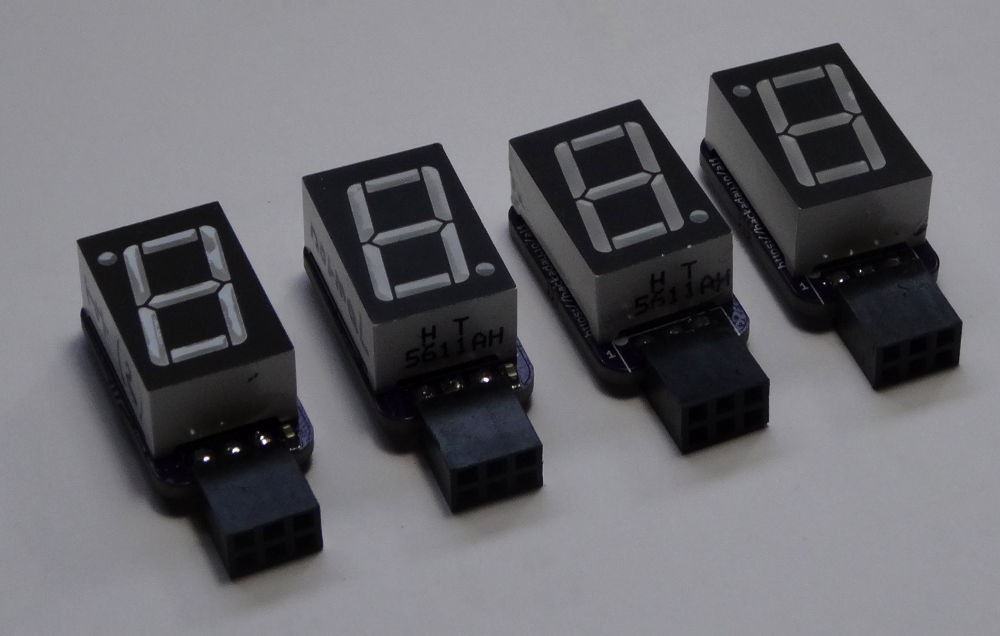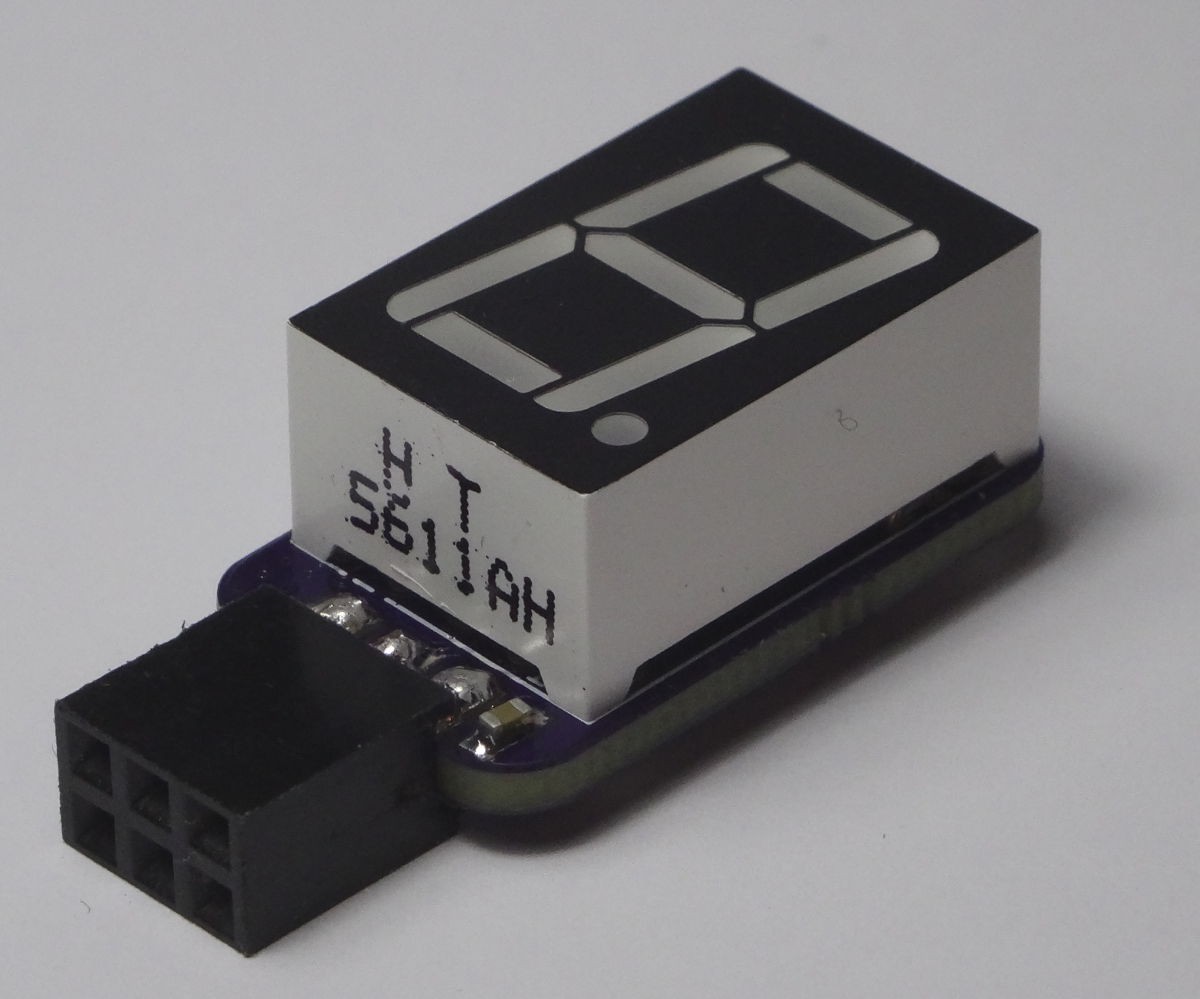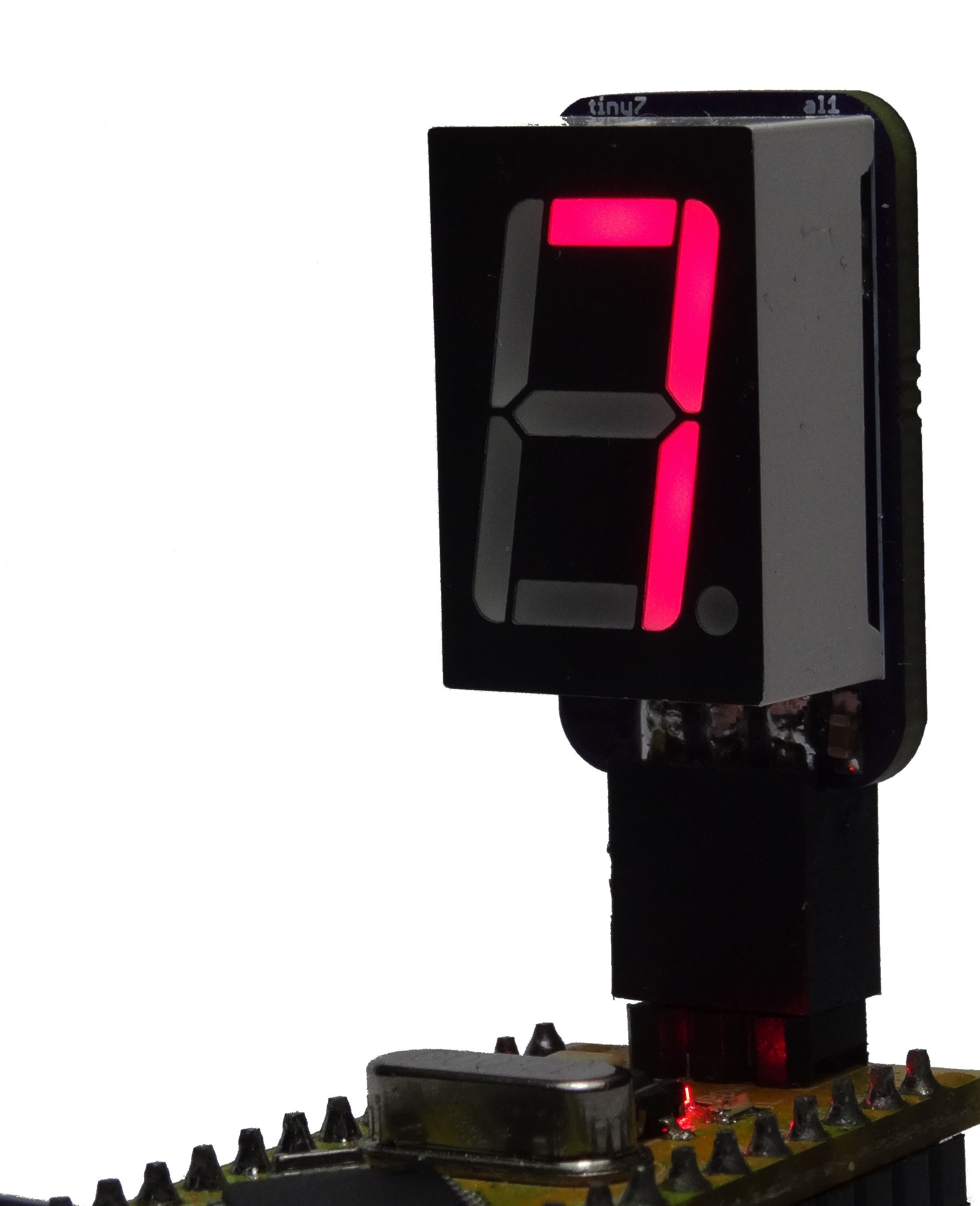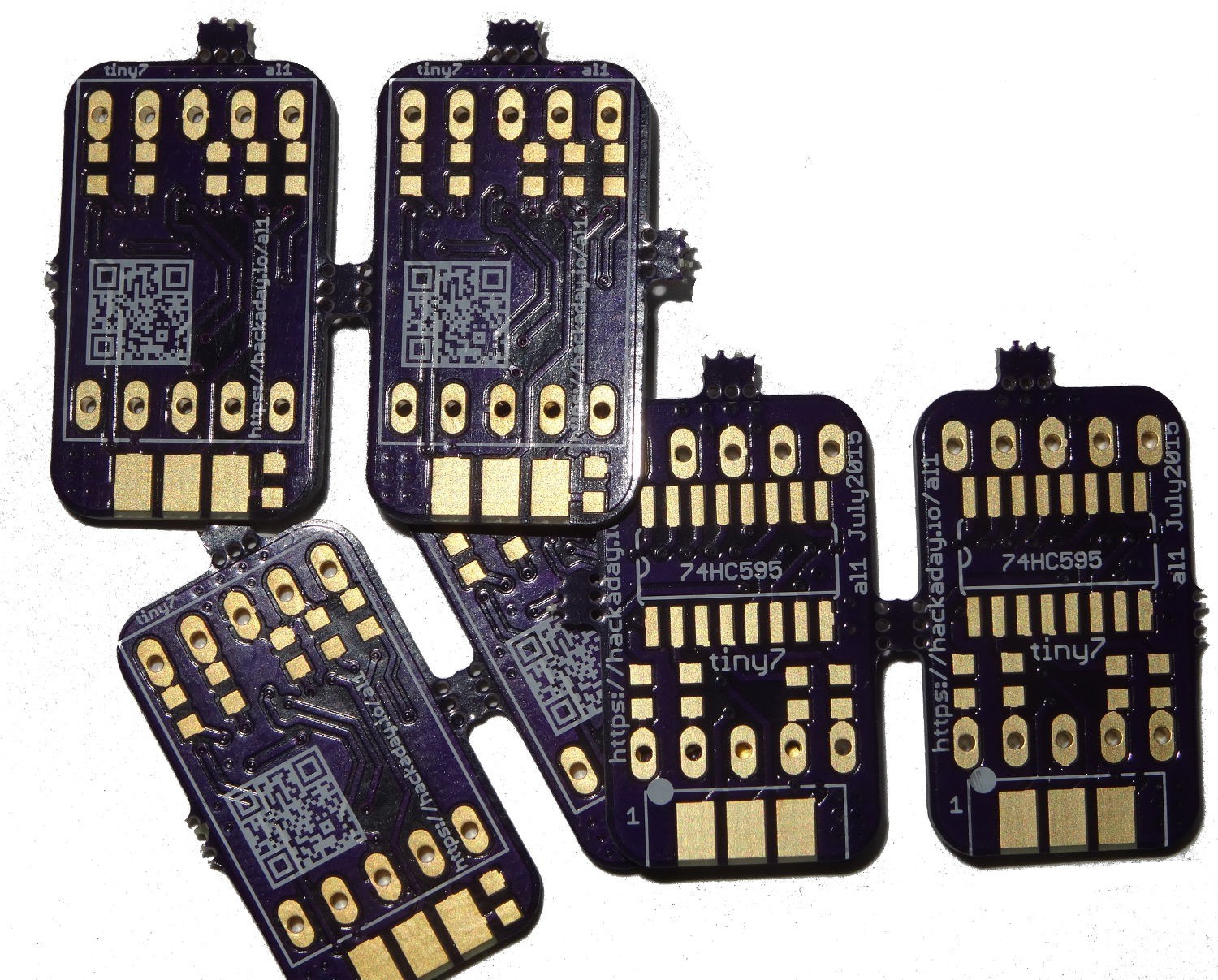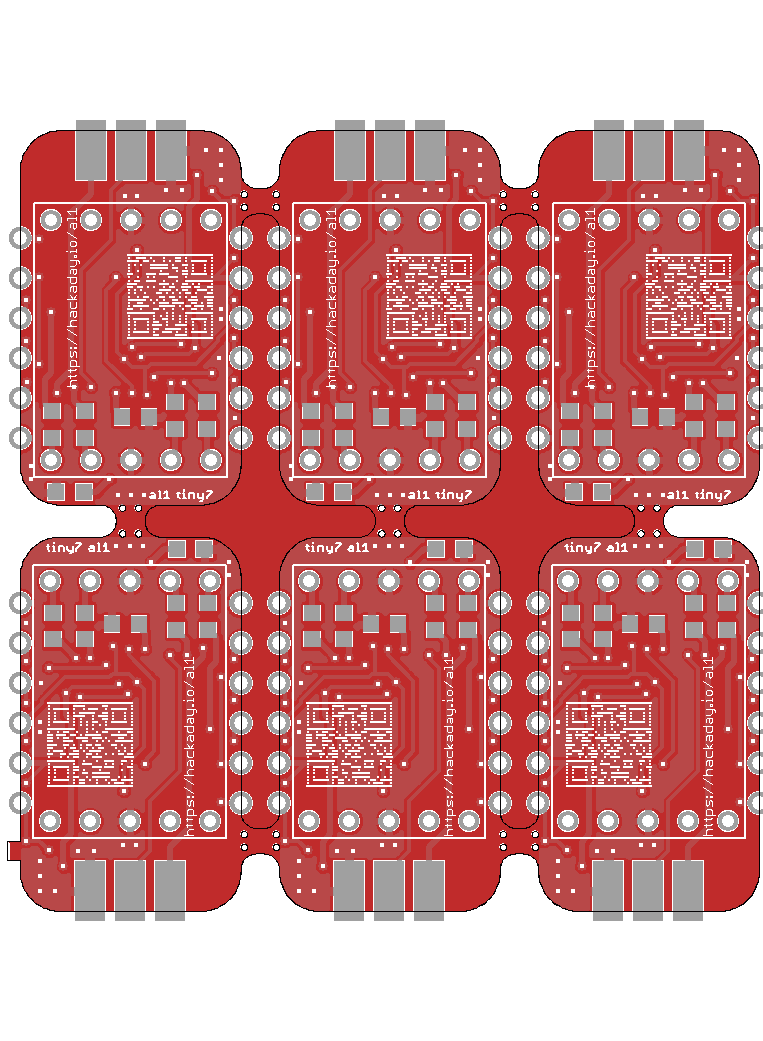-
More Bords soldered
07/22/2015 at 14:43 • 0 commentsMore Boards:
The display is mounted different on each one. The library already supports the Display mounted on the other side. Next I will add support for displays mounted upside down. Therefore I do have test-hardware now.
-
Soldering (of the first one) ready
07/20/2015 at 20:04 • 2 commentsSo I did solder the first tiny7 PCB:
I think this looks quite good and it did also work at the first try!
As resistors for the segments I used 1kOhm this time. So ~3mA flows through each LED. With this current I am now in spec. of the HC595 and the display is bright enough.
-
PCBs arrived form osh park
07/20/2015 at 16:26 • 0 commentsNow it is time for some soldering!
-
Orderd Rev2
07/19/2015 at 13:49 • 0 commentsAlthough the Rev1 did not arrived yet, I ordered Rev2 boards today. The main advantage is that the new boards can be chained. I ordered them in china at dirtypcbs.com. They do allow you to make small panels. And that is something I wanted to try out out for some time time. I Hope this will work:
![]()
Normally the shipping and handling is slow. So there will be enough time to test an improve the library with the rev1 boards.
-
Idea for daisy chain more tiny7 boards
07/17/2015 at 19:30 • 0 commentsWell in the comments there was the idea that it would be useful to daisy chain this display. Theoretical the only thing which is needed is the shift output of the the first register an connect it to the input of the next. But then you would need al lot of wire additional to connect the supply voltage, the clock and the latch pin. So I came up with this (rendering from OSH-Park):
![]()
As you can the there are now additional PAds on both sides. These are for soldering two boards together. Only on the first board the ISP header is to be mounted. So multi segment display can be created.
Thanks to @Stefan Lochbrunner and @Dmm6137 for their comments.
-
First breadboard test
07/02/2015 at 19:15 • 0 commentsI tested a first breadboard version. I also started to make an Arduino Library. I will also make a normal AVR library soon. Files can be found here.
![]()
tiny7
small seven segment display for plugging on an ISP programming header of an Atmel Board or an Arduino
 Alex
Alex